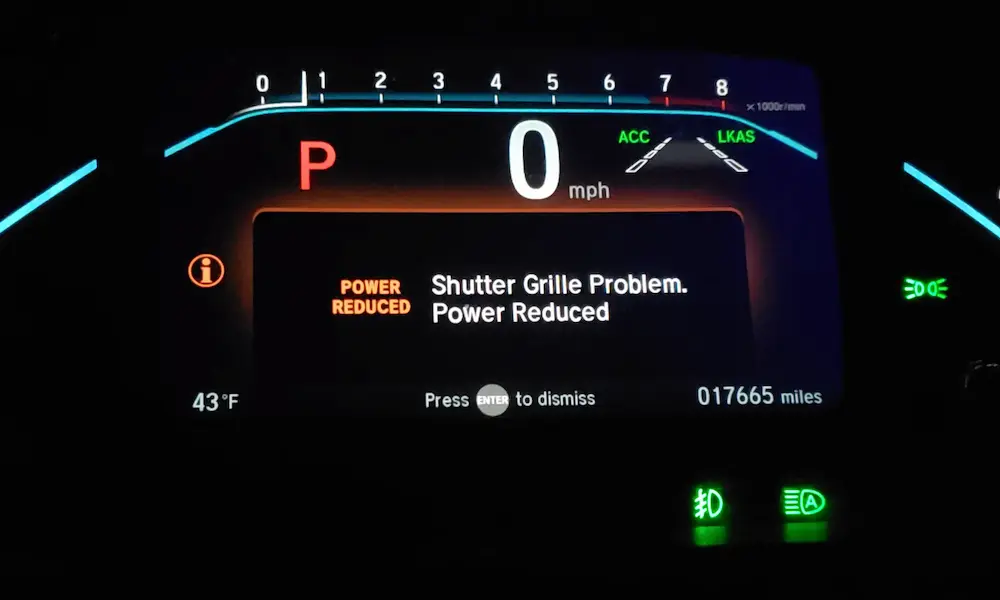Seeing a “Brake System Problem” message on your Honda Civic can be confusing and stressful. This warning often relates to brake fluid levels, electrical issues, or sensor malfunctions. Knowing what might cause the alert helps you address the issue promptly. Learning more about these problems can save you time and potentially a costly trip to the mechanic. Keep reading to discover solutions that could resolve your car’s warning message.
Understanding the Honda Civic Brake System
The Honda Civic’s brake system comprises various components that work together for safe driving. Recognizing warning signs early can help address potential issues. Additionally, the VIN can uncover specific brake system problems and assist in troubleshooting.
Components of the Brake System
Your Honda Civic’s brake system is made up of several essential parts. The brake pedal is what you press to activate the brakes. It connects to the brake lines, which carry brake fluid from the brake fluid reservoir to the wheels. This fluid is crucial for transferring the force from your foot to the brakes efficiently.
The brake pads press against a rotor to stop the wheels, and if they become worn, they may reduce braking efficiency. The anti-lock brake system (ABS) helps prevent the wheels from locking up during hard braking, enhancing control. Keeping these components in good condition ensures optimal brake performance.
Brake System Warning Signs
Be alert to warning signs from your brake system. One significant indicator is the brake warning light on your dashboard. If this light comes on, it might signal low brake fluid or worn brake pads. A spongy or unresponsive brake pedal usually indicates air in the brake lines or fluid leaks.
Grinding noises when braking can mean that the brake pads need replacement. It’s important to address these issues promptly to maintain vehicle safety. If the brake fluid is low, topping it up may help, but persistent problems require professional assessment to avoid potential brake failure.
Role of the VIN in Brake System Issues
Your vehicle identification number (VIN) is a valuable tool for diagnosing brake problems. This unique number reveals specific information about your Honda Civic, including recalls or common issues that may affect your brake system. A quick check with the VIN can help you find relevant service bulletins or recall notices.
When you experience brake issues, use the VIN to get detailed information from your dealership or repair shop. They can use it to confirm if there are known problems affecting your Civic’s model year or production run. This helps tailor repairs to solve any specific brake system issues efficiently.
Common Problems and Diagnostic Strategies
Understanding the brake system problems in your Honda Civic can help prevent safety issues. This section discusses common errors like brake system warnings, electric parking brake issues, and what to do about a spongy brake pedal.
Decoding the ‘Brake System Problem’ Message
When your Honda Civic displays a “Brake System Problem” message, it’s important to pay attention. This warning often indicates issues with the brake fluid level. Begin by checking if the fluid is low. If it is, refill it with the correct type.
Another reason for this message could be a malfunctioning sensor. Sensors sometimes fail, leading to unnecessary warnings. If the problem persists after checking fluids and sensors, consult a professional mechanic to avoid any safety risks.
Electric Parking Brake System Issues
Electric parking brakes are convenient but can sometimes act up. You might notice the brake system light is on, indicating a problem. Check if the brake isn’t fully engaged. Sometimes debris can cause the brake to not function properly.
Try resetting the system by turning the ignition off and on. If the issue continues, there might be a deeper problem with the system’s software. Consider visiting your dealer for a software update or a detailed system diagnostic.
Interpreting Error Messages and Warning Lights
Error messages and warning lights can be alarming, but they’re there to assist you. When you see lights like the brake system warning, look for visible clues. A lit brake system light often means the brake fluid needs checking or there’s an issue with the brake’s hydraulic system.
Use an OBD-II scanner to read diagnostic codes. This tool can help determine the exact issue by displaying specific error codes. Once you have the codes, you can search online or refer to your car’s manual for the meaning.
Troubleshooting a Spongy Brake Pedal
A spongy brake pedal can feel uneasy, suggesting air in the brake lines. Start by checking for any visible leaks in the brake system. If you find none, consider bleeding the brakes to remove any trapped air.
Another reason for a spongy feel could be degraded brake fluid. Over time, brake fluid absorbs moisture, affecting brake performance. Flush the old fluid and replace it with new, high-quality brake fluid to restore firmness to the pedal.
Immediate Actions and Safety Measures
If your Honda Civic displays a brake system warning light, it’s important to act quickly. This guide will help you address low brake fluid levels and a stuck electric parking brake, ensuring your car stays safe on the road.
Responding to Low Brake Fluid Levels
When you see a brake warning light pointing to low brake fluid, it’s crucial to pull over safely. After stopping, locate the brake fluid reservoir under the hood. If the fluid level is below the minimum mark, you’ll need the right type of brake fluid to top it off.
Maintaining proper brake fluid levels is key for optimal braking. Regularly inspecting fluid levels and keeping the reservoir clean can prevent further issues. If you’re not comfortable checking or adding fluid, visit a professional mechanic for assistance. If problems persist or warnings reappear, further inspection might be necessary.
Dealing with a Stuck Electric Parking Brake
A stuck electric parking brake system problem can be frustrating. First, ensure you’re parked in a safe area before attempting any fixes. Sometimes, this issue is caused by a malfunctioning brake hold system. Restarting your car may reset the system and release the brake.
If the electric parking brake remains stuck, check your vehicle’s manual for specific instructions. You may need to engage and release the switch repeatedly. If the problem doesn’t resolve, professional help is recommended. Consistent maintenance checks can prevent such issues and keep your parking brake functioning correctly.
Maintaining Your Brake System
Taking care of your Honda Civic’s brake system is essential for safety and top performance. Regular checks and understanding new features like brake hold and electric parking brakes can help keep your car running smoothly.
Regular Maintenance Tips
Regular maintenance of your brake system ensures safety and reliability. Start by having your brakes inspected regularly, especially if you notice any unusual sounds or reduced performance. Look at the brake pads, rotors, and brake fluid. Replacing brake pads before they wear down completely can prevent damage to the rotors, which can be costly.
Check the brake fluid level and color. Low or dark fluid might indicate a leak or the need for a flush. Also, ensure that your brake lines are in good shape and free of leaks. Keeping up with maintenance can help prevent the brake system problem message from appearing.
Understanding Brake Hold and Electric Parking Brake Features
Modern Honda Civics include helpful features like brake hold and electric parking brakes. Brake hold can keep your car stationary without holding the brake pedal. This is useful in stop-and-go traffic, allowing you to relax without rolling backward or forward unintentionally.
The electric parking brake replaces traditional handbrakes. It activates with a simple switch, making parking on slopes easier and safer. If your model includes adaptive cruise control, the system may work with these features to maintain the set speed and distance from the car ahead while controlling braking. Understanding these features enhances your brake performance and driving experience.
Understanding Warranty and Repair Costs
When dealing with a brake system problem in your Honda Civic, it’s important to know what your warranty covers and what you might need to pay for repairs. This section provides details on both warranty coverage and repair costs.
Warranty Coverage for the Brake System
Your Honda Civic likely comes with a basic warranty that covers many components, including some parts of the brake system. A standard warranty often lasts for three years or 36,000 miles, whichever comes first. This coverage may include defects in materials or workmanship but typically won’t cover wear-and-tear items like brake pads or rotors.
For brake system issues, it’s important to review your warranty documents or contact your dealer. Some warranties offer extended coverage, or specific plans may include roadside assistance, which can be helpful in a breakdown. Be aware of any stipulations or requirements, such as needing repairs done at authorized service centers. This can ensure you don’t end up paying for services that should be covered.
Estimating the Cost of Brake Repairs
If your brake problem isn’t covered by warranty, it’s useful to estimate potential costs. Brake repairs can vary widely depending on the specific issue. Simple tasks like replacing brake pads could range from $100 to $300 per axle.
More complicated repairs, such as rotor replacement or work on the brake lines, might cost significantly more. Always get a detailed estimate before any work begins. Check different service centers to compare prices. Online forums or resources may help you anticipate potential costs based on other Honda Civic owners’ experiences. Regular maintenance and prompt attention to brake issues can help avoid more costly repairs down the line.














